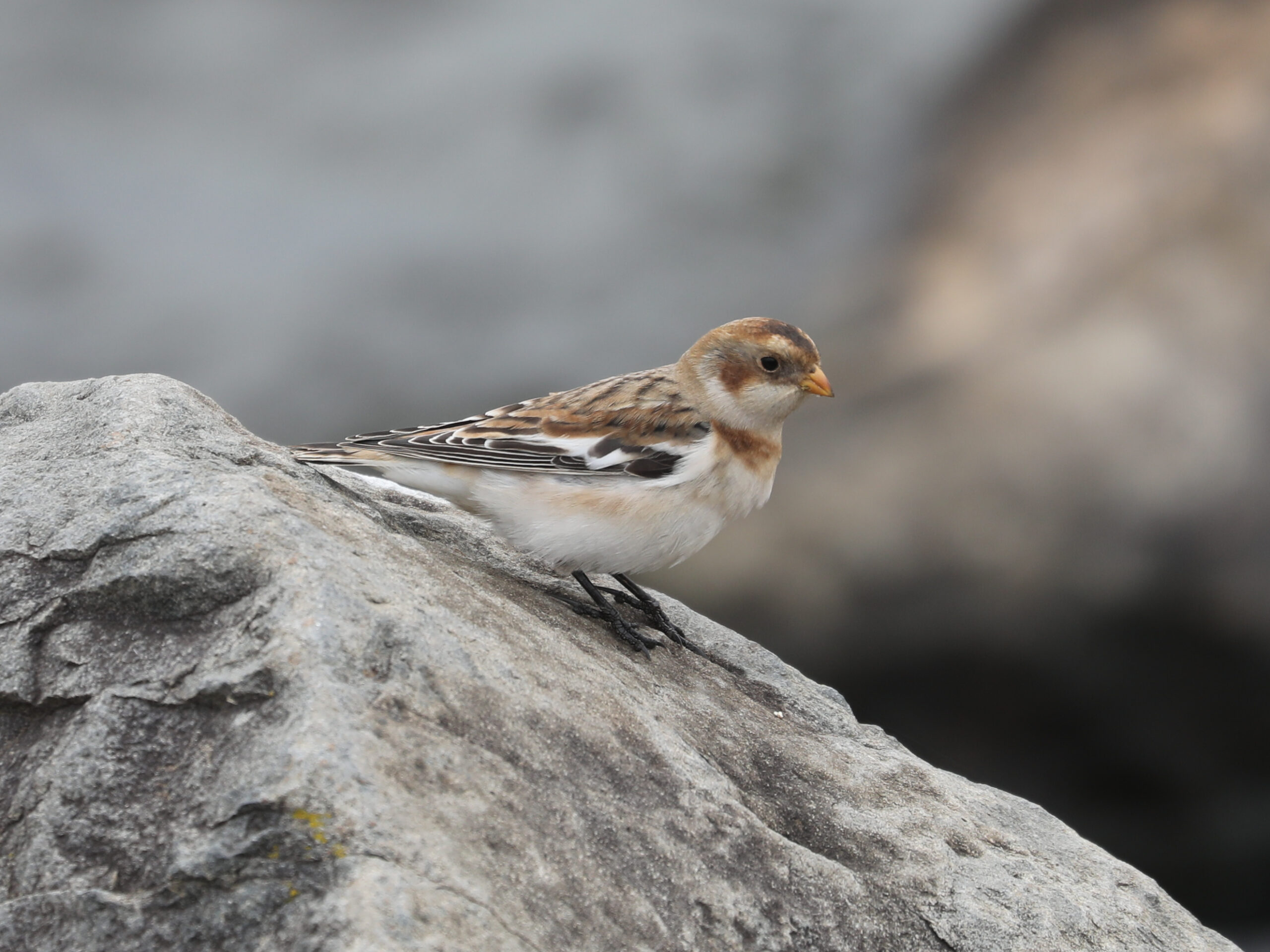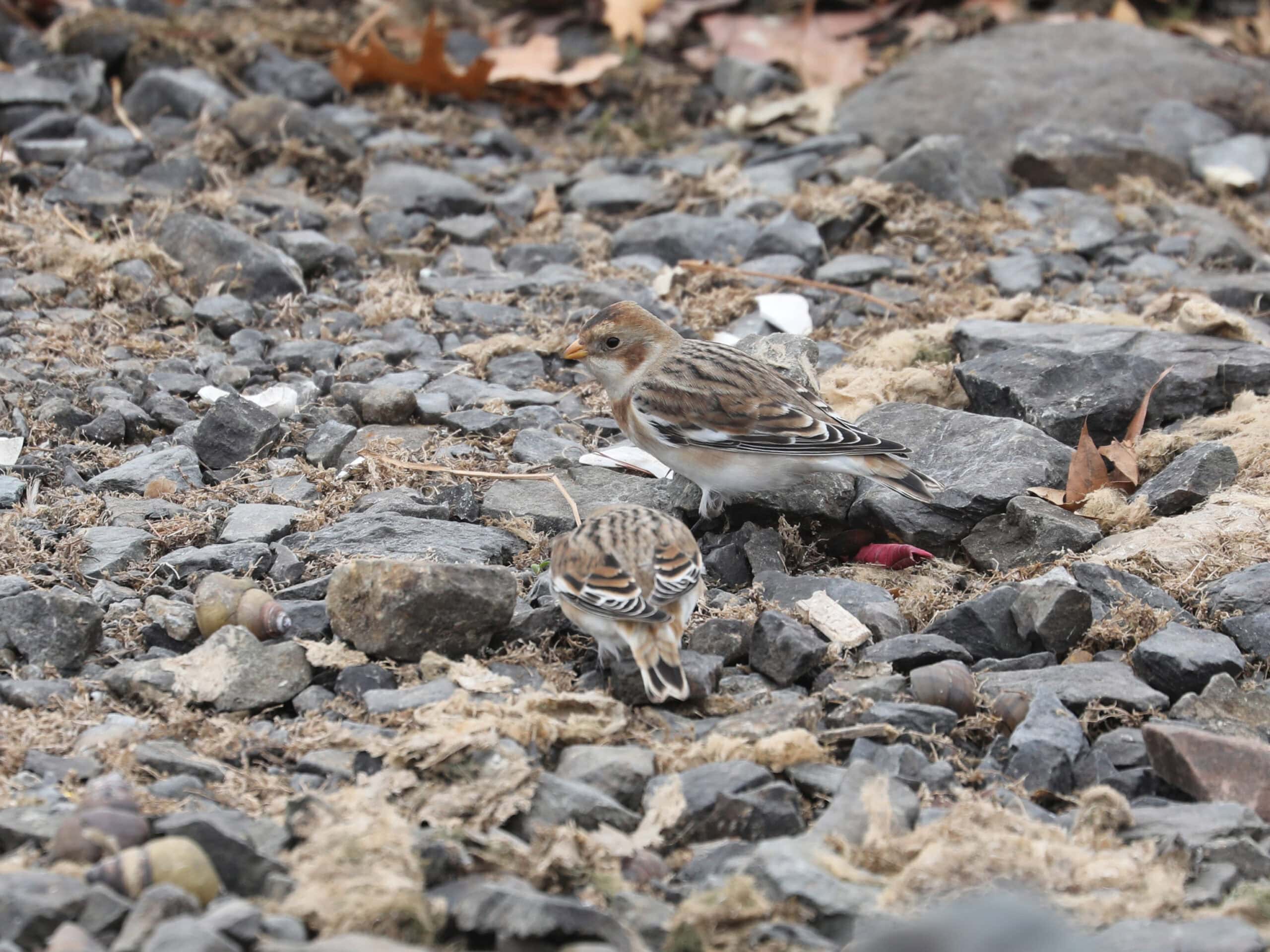Arctic Visitors: Snow Buntings
This past weekend I was able to photograph Snow Buntings for the first time. These sparrow-like birds visit Pennsylvania in small numbers each year. They’re so rare that I sometimes miss seeing them at all for several consecutive years. The difficulty I’ve had finding these birds made it delightful to have two buntings calmly searching for seeds less than twenty feet from me. I enjoyed watching them for a few minutes before they took off together and flew away.
Snow Buntings are a “holarctic” species, meaning that they nest in a ring around the Arctic Circle, including the northern parts of North America, Europe, and Asia. Their breeding grounds are so far north that trees aren’t able to grow there. When Snow Buntings visit Pennsylvania during the winter, they seek out similar treeless habitats, including large farm fields and the rocky shores of large lakes. Their brownish winter plumage makes great camouflage – check out the photo below to see how well the two buntings blend in with the rocks. Snow Buntings only molt once each year, but the brown parts of their feathers wear off during the winter, exposing their bright white breeding plumage in the spring.
Male Snow Buntings in Pennsylvania leave early enough to get back to their nesting areas in northern Canada by early April. Often temperatures there are still as low as negative 20 degrees Fahrenheit. The females won’t join them for several weeks, but males must race north to claim a nest site. Unlike most other songbirds, Snow Buntings build their nests deep in crevices between large rocks, sheltered from the wind and snow. To protect their eggs from the cold rock, Snow Buntings build thick nests insulated with their own feathers, other birds’ feathers, and fur from mammals like Arctic foxes and Arctic hares. Once she lays eggs, the female must incubate the eggs constantly to protect them from the cold. She rarely risks leaving the nest and survives on food brought by her mate.
Arctic Visitors: Snow Buntings
This past weekend I was able to photograph Snow Buntings for the first time. These sparrow-like birds visit Pennsylvania in small numbers each year. They’re so rare that I sometimes miss seeing them at all for several consecutive years. The difficulty I’ve had finding these birds made it delightful to have two buntings calmly searching for seeds less than twenty feet from me. I enjoyed watching them for a few minutes before they took off together and flew away.
Snow Buntings are a “holarctic” species, meaning that they nest in a ring around the Arctic Circle, including the northern parts of North America, Europe, and Asia. Their breeding grounds are so far north that trees aren’t able to grow there. When Snow Buntings visit Pennsylvania during the winter, they seek out similar treeless habitats, including large farm fields and the rocky shores of large lakes. Their brownish winter plumage makes great camouflage – check out the photo below to see how well the two buntings blend in with the rocks. Snow Buntings only molt once each year, but the brown parts of their feathers wear off during the winter, exposing their bright white breeding plumage in the spring.
Male Snow Buntings in Pennsylvania leave early enough to get back to their nesting areas in northern Canada by early April. Often temperatures there are still as low as negative 20 degrees Fahrenheit. The females won’t join them for several weeks, but males must race north to claim a nest site. Unlike most other songbirds, Snow Buntings build their nests deep in crevices between large rocks, sheltered from the wind and snow. To protect their eggs from the cold rock, Snow Buntings build thick nests insulated with their own feathers, other birds’ feathers, and fur from mammals like Arctic foxes and Arctic hares. Once she lays eggs, the female must incubate the eggs constantly to protect them from the cold. She rarely risks leaving the nest and survives on food brought by her mate.
About The Author
Dan Hinnebusch is the Ornithologist for Wild Birds Unlimited. Click to learn more.





